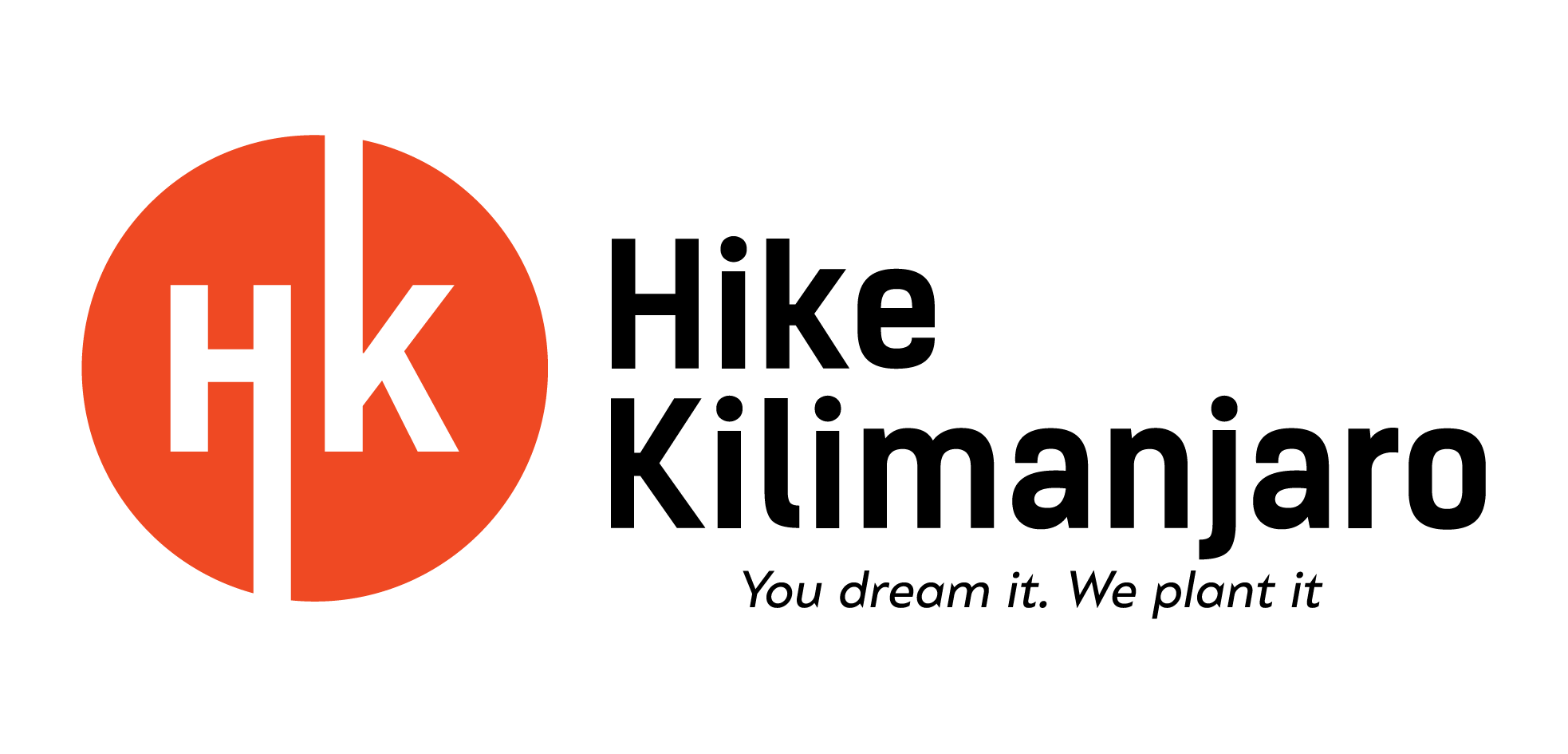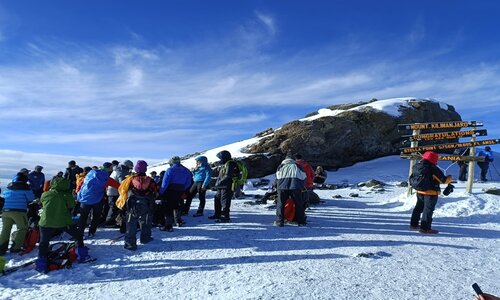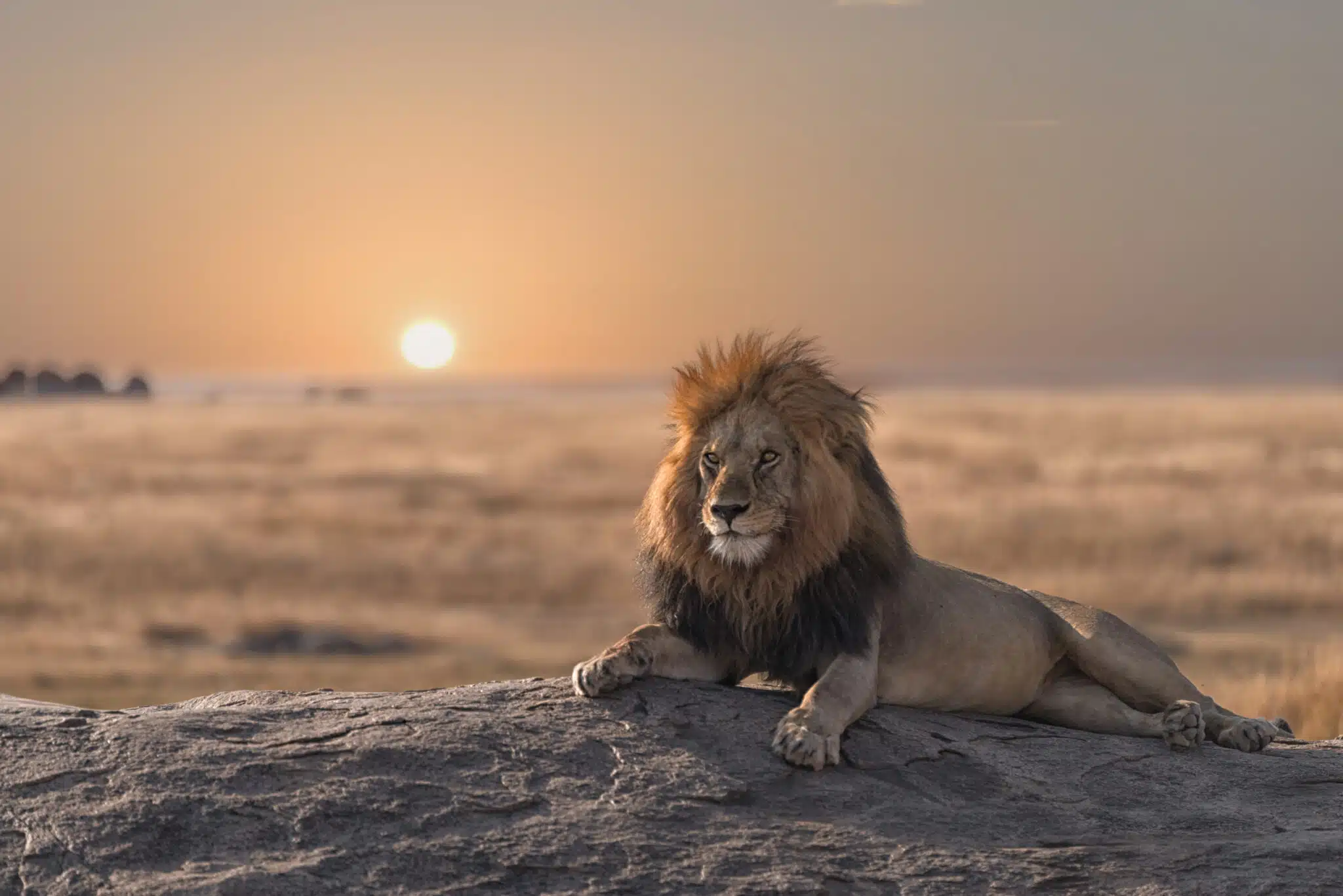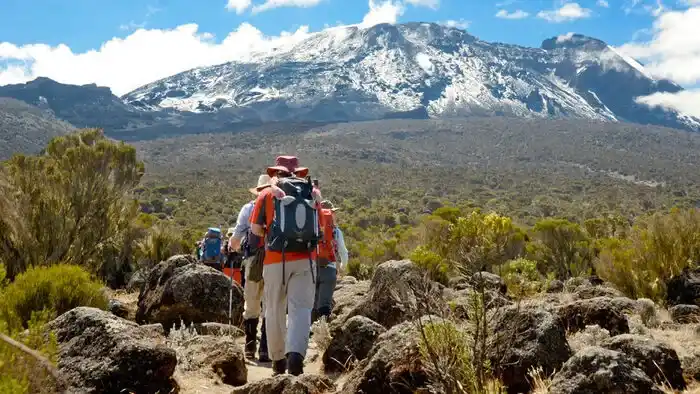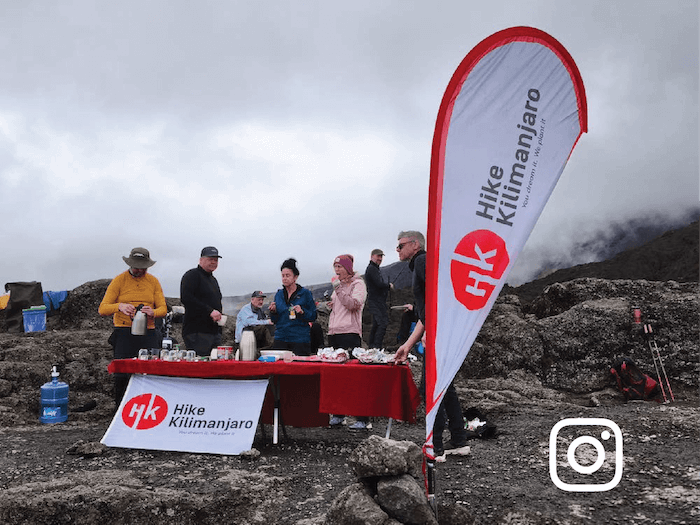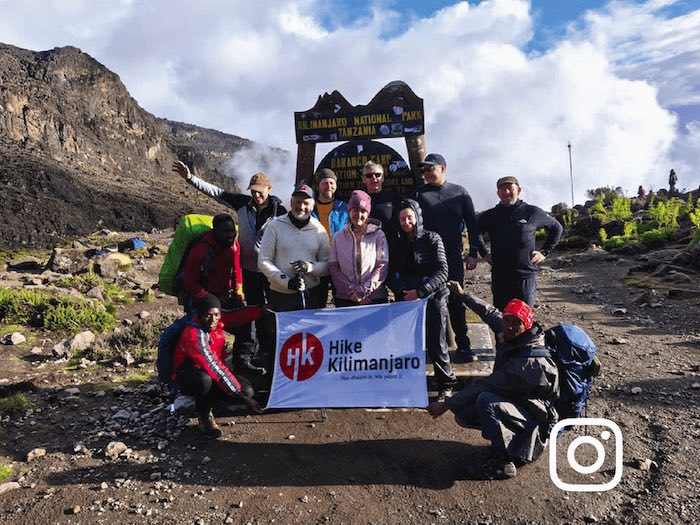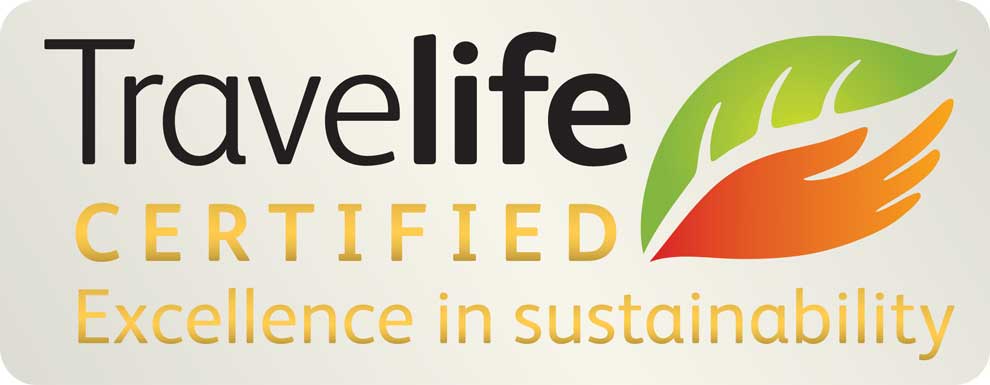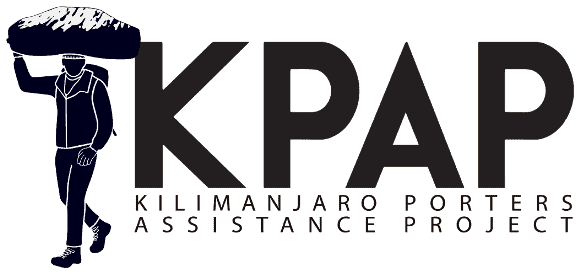How Hard Is It to Climb Mount Kilimanjaro?
Wondering how hard it is to climb Mount Kilimanjaro? Discover the physical demands, altitude challenges, success rates, and expert tips to prepare for Africa’s highest peak.
At 5,895 meters (19,340 ft), Mount Kilimanjaro stands as the tallest mountain in Africa and the highest free-standing mountain in the world, rising proudly from the plains of northern Tanzania. If you’re planning a visit to this remarkable destination, you might be wondering: how hard is it to climb Kilimanjaro?
We’re here to break down the Kilimanjaro hike difficulty, what to expect on the trail, and how to give yourself the best shot at reaching the summit. Spoiler alert: it’s not easy, but it’s one of the most rewarding things you’ll ever do.
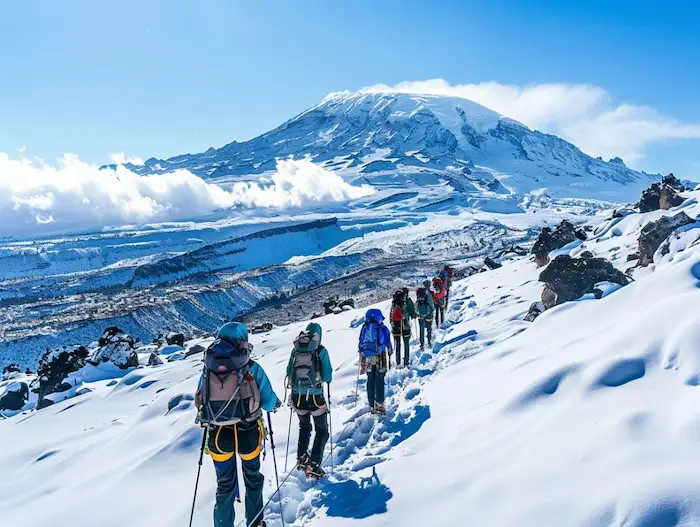
Is Kilimanjaro Hard To Climb?
A simple answer: yes, but not in the way you might think. For most trekkers, a Mount Kilimanjaro trek isn’t about technical climbing. You don’t need ropes or ice axes, and most routes are straightforward walks. So what makes it hard?
The real challenge lies in the altitude.
At high elevations, the oxygen level at the summit drops to about 50% of what you’re used to at sea level. That, combined with physical exertion, limited amenities, and sometimes harsh weather, makes the climb physically and mentally demanding.
But don’t let that discourage you thousands of trekkers (including beginners) summit each year with the right preparation, pacing, and support.
Mount Kilimanjaro Difficulty
Altitude on Kilimanjaro
The number one challenge on Kilimanjaro is the altitude. At the summit of Uhuru Peak, you’re breathing air with only about 49% of the oxygen found at sea level. This can lead to altitude sickness, which includes symptoms like headaches, nausea, fatigue, dizziness, and shortness of breath.
The key to overcoming this? Acclimatization.
Choosing a longer Kilimanjaro route, like the Lemosho Route or Machame Route, gives your body more time to adapt to the thin air. Treks that span 6 to 9 days dramatically increase your summit success rate.
So, when it comes to altitude, the rule is: go slow, go high, sleep low.
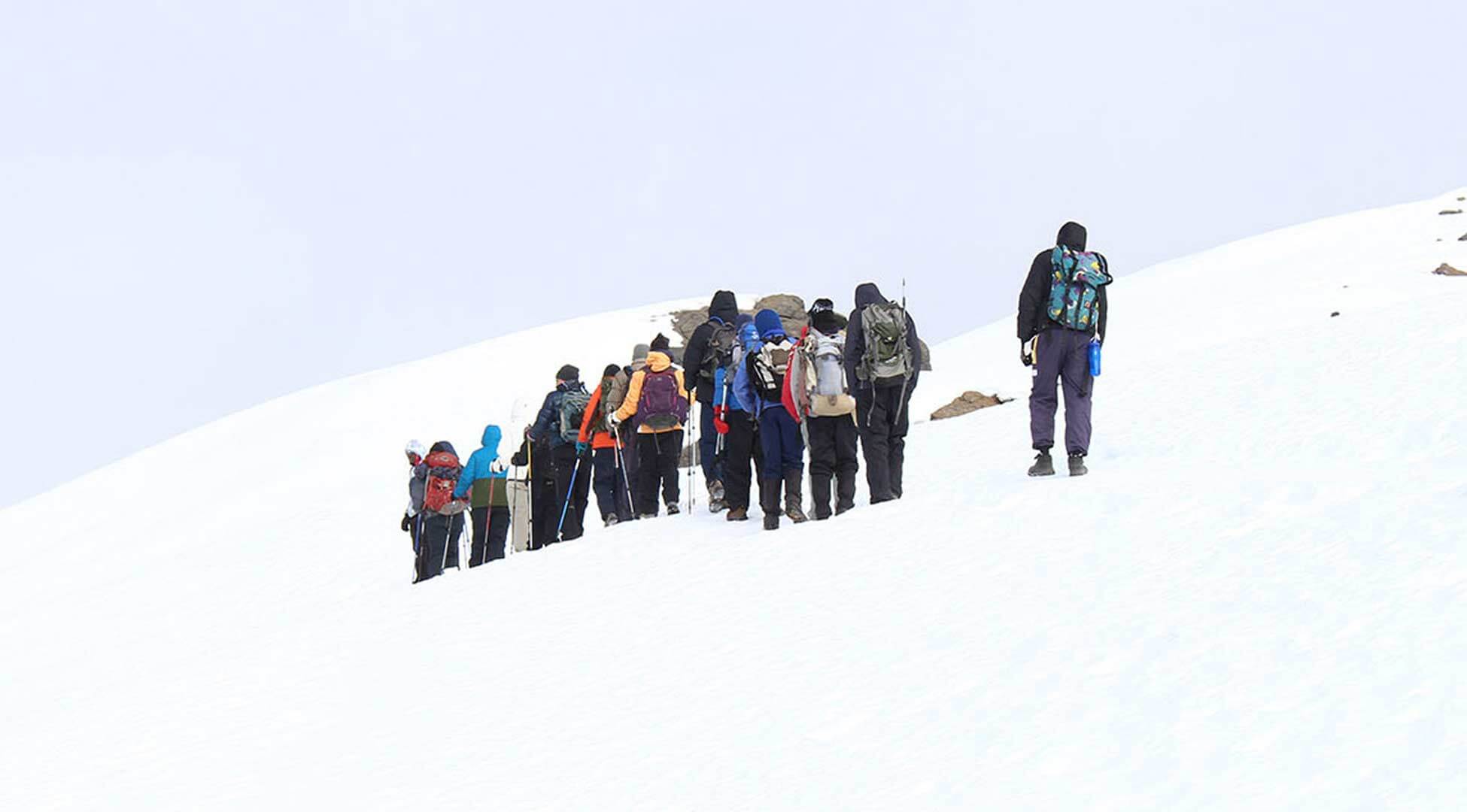
Kilimanjaro Hike Routes
There are eight Kilimanjaro routes leading to the top:
Route
Distance
Time
Umbwe
53 km (32 miles)
5 – 7 days
The Western Breach
52 km (32 miles)
6 – 7 days
Shira
56 km (35 miles)
6 – 8 days
Machame
62 km (37 miles)
6 – 7 days
Rongai
70 km (43 miles)
6 – 7 days
Lemosho
70 km (42 miles)
7 – 9 days
Marangu
72 km (45 miles)
5 – 6 days
Northern Circuit
88 km (53 miles)
8 – 9 days
Depending on the route you choose, your Kilimanjaro trek will last between five and nine days. As previously mentioned, the longer routes, such as Machame, Lemosho, Rongai, and the Northern Circuit, are not only safer but also easier on the body, thanks to their extended acclimatisation periods. These typically take six or more days to complete.
Some companies offer shorter routes, which tend to be more budget-friendly and attract climbers looking to save on costs. However, it’s important to note that shorter treks come with a much lower success rate, often around 60% compared to the 85% to 95% success rate of the longer, more gradual ascents.
The most challenging and potentially dangerous route on Kilimanjaro is the Western Breach. This path involves steep, rocky terrain and has a history of rockfall incidents, including several that have caused fatalities over the years.
For beginners, the Lemosho Route is widely considered the best option. It offers a longer acclimatisation period, moderate hiking conditions, and some of the most breathtaking scenery on the mountain.
Another beginner-friendly choice is the Marangu Route, also known as the “Coca-Cola Route.” It’s the only route that offers hut accommodations instead of tents, making it appealing to first-time trekkers. However, its relative ease and comfort also make it one of the busiest and most crowded routes on Kilimanjaro.
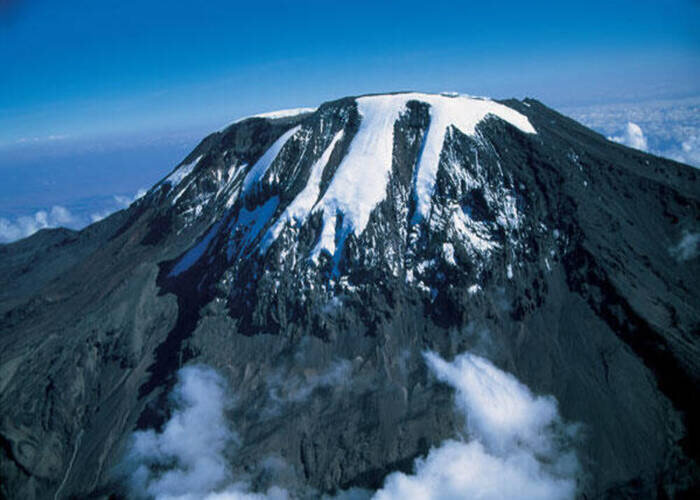
None of the Kilimanjaro routes require technical climbing gear such as ropes, harnesses, or ice axes. While there are a few challenging sections along the way, the trek is generally non-technical and accessible to individuals with varying levels of hiking and mountaineering experience.
Camping and Sleeping Conditions
Unless you’re on the Marangu Route (which offers dormitory-style huts), expect to sleep in mountain tents for the duration of your trek. The experience is rustic; you’re sleeping on the ground in a sleeping bag with limited privacy and no showers.
You’ll be without modern amenities for at least 5 to 9 days, depending on your chosen route. But don’t worry, our team at Hike Kilimanjaro provides high-quality tents, portable toilets, and hearty meals to make it as comfortable as possible.
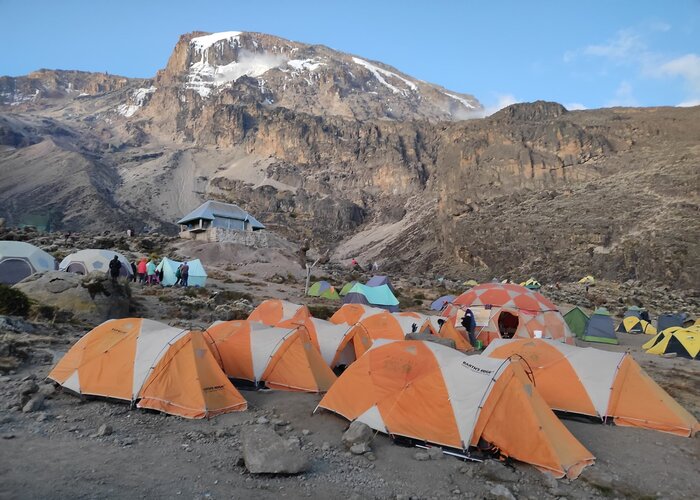
Weather on Kilimanjaro
Despite being in Africa, Mount Kilimanjaro’s weather can get brutally cold at higher elevations. Temperatures on summit night can plunge to -20°C (-4°F) or lower.
That’s why it’s essential to climb during the best seasons:
July to October
December to February
Pack layered clothing, including a thermal sleeping bag, waterproof gear, and high-quality hiking boots to ensure your comfort throughout the journey.

Your Physical and Mental Condition
Do you need to be an elite athlete to climb Kilimanjaro? Not. But you do need to be physically prepared and mentally strong.
Expect to hike 5–8 hours per day, with summit day being the longest, 10 to 15 hours of uphill and downhill trekking at high altitude. Training for at least 6–8 weeks in advance with cardio, endurance, and strength-building exercises is highly recommended.
Just as important is your mindset. Staying positive, determined, and adaptable plays a major role in your success.
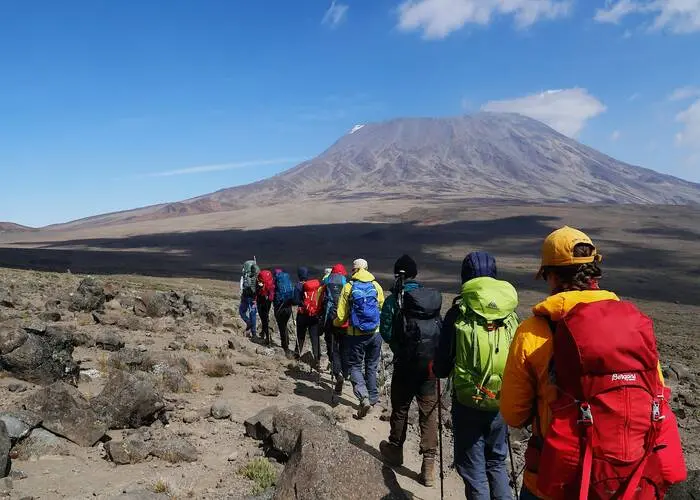
How Difficult Is Kilimanjaro? Success Rates!
Success on Kilimanjaro largely depends on your chosen route and how well you acclimatize. Here’s a quick look at the success rates:
Lemosho Route: ~90%
Machame Route: ~85%
Marangu Route: ~65%
Overall Kilimanjaro success rate: ~65%
A longer route gives your body time to adjust, significantly increasing your chances of making it to the top.
Can an Average Person Climb Kilimanjaro?
Yes absolutely! Thousands of everyday people successfully summit Kilimanjaro every year. You don’t need mountaineering experience. You just need:
- Good planning and preparation
- A reliable Kilimanjaro tour company (that’s us!)
- A longer itinerary for acclimatization
- A positive mindset
- A basic level of fitness and endurance
Quick FAQs
How many people fail to climb Kilimanjaro?
Roughly 30 to 40% of climbers fail to reach the summit. The most common reason is altitude-related illness
Is 50 too old to climb Kilimanjaro?
Not at all. Many climbers in their 50s, 60s, and even 70s summit Kilimanjaro every year. The key is good health and preparation.
Can a beginner climb Kilimanjaro?
Yes! As long as you’re physically active and train in advance, Kilimanjaro for beginners is achievable. Our expert guides will support you every step of the way.
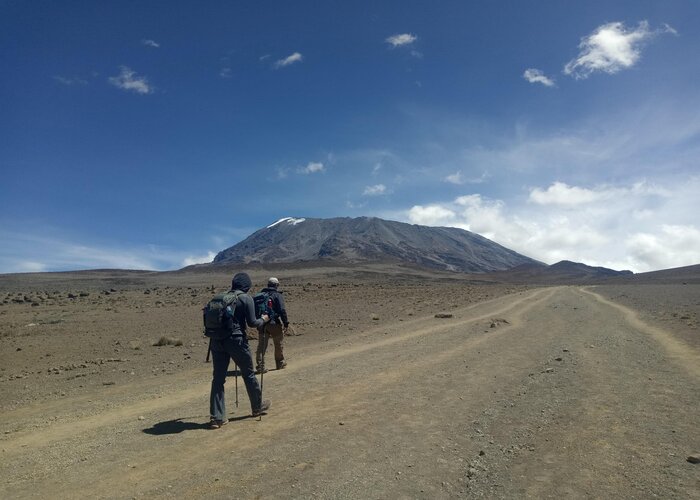
If you can dream it, you can do it
Climbing Mount Kilimanjaro is a journey of both body and spirit. The trek is hard, but that’s exactly what makes the summit moment so emotional and unforgettable.
The key is to prepare well, choose the right Kilimanjaro route and go with an experienced team that prioritizes your safety.
At Hike Kilimanjaro, we offer all-inclusive Kilimanjaro trekking packages with expert guides, high-altitude equipment, and unmatched service. Whether you’re a seasoned trekker or taking on your first big mountain, we’ve got you covered from start to summit.
[Book your Kilimanjaro adventure today] or [contact us] with any questions; we’re here to help you conquer the roof of Africa!
Make your dream trip come true with Hike Kilimanjaro .

5/5
Based on 100+ reviews

4.9
Based on 60+ reviews
Customized Travel Proposal
At Hike Kilimanjaro, you can tailor your trip to your preferences. Our sample itineraries are customizable, and our specialists work with you to create your dream trip!
Related posts
These full and frank reviews are from travelers who have traveled with Hike Kilimanjaro previously. The reviews and experiences shown here are from reputable travel websites like TripAdvisor, Google, Facebook, and Trust Pilot, etc.
EXCELLENTVerified "This 3-day luxury safari combined with a Kilimanjaro hike exceeded all my expectations. "This 3-day luxury safari combined with a Kilimanjaro hike exceeded all my expectations. The accommodations were elegant and comfortable, and the guides were knowledgeable and friendly. The safari offered incredible wildlife photography opportunities, and climbing Kilimanjaro was a true test of endurance and strength, but the stunning vistas made it all worthwhile. An exceptional journey that I will cherish forever."Posted onVerified "My entire expectations were surpassed by climbing Kilimanjaro. "My entire expectations were surpassed by climbing Kilimanjaro. When one reaches Uhuru Peak, the sensation of accomplishment is indescribable. Because of the well-planned logistics, the amiable crew, and the breathtaking environment, the entire hike was easy and fun. It is a very remarkable event that I would gladly repeat. For adventurers, it's a must.Posted onVerified Tanzania truly offers a world-class experience. "My trek up Mount Kilimanjaro in Tanzania exceeded all my expectations. The stunning scenery, from lush rainforests to icy glaciers, was awe-inspiring. The local guides and porters were incredibly supportive and professional, ensuring a safe and enjoyable climb. It was challenging but incredibly rewarding. Tanzania truly offers a world-class experience for anyone looking to conquer Africa’s highest peak."Posted onVerified I feel accomplished and thankful. Kilimanjaro climbing was satisfying and difficult at the same time. Along the way, there was breathtaking natural splendour and a variety of diverse habitats. The guiding team's assistance was outstanding and got us through some really difficult times. After completing this amazing journey, I feel accomplished and thankful.Posted onVerified Thanks to their knowledgeable advice. From beginning to end, Hike Kilimanjaro offered a smooth and well-planned trip. Their staff made sure we were at ease and ready by being helpful and considerate. Thanks to their knowledgeable advice, climbing Kilimanjaro was difficult but incredibly gratifying. They are the ones I would most certainly pick again for excursions in the future.Posted onVerified "An amazing and well-planned adventure. "An amazing and well-planned adventure! The climb was fun and safe because of the team's experience and upbeat demeanour. I was encouraged by the journey and pleased to have reached the top of Africa.Posted onVerified Highly recommended this tour agency. Wonderful experience! We had a fantastic trip and enjoyed the entire team; we always felt very protected and taken care of. Highly recommended. I want to thank Keddy in particular; you were the best mentors .Posted onVerified "My Kilimanjaro trek was an extraordinary experience. "My Kilimanjaro trek was an extraordinary experience. The route was well-organized, and the staff was attentive and encouraging throughout the climb. The sense of accomplishment upon standing on the summit was overwhelming. The scenery, the challenge, and the sense of connection with nature made this hike truly special. I highly recommend it to anyone looking for a once-in-a-lifetime adventure."Posted onVerified Well Organized and Unforgettable. Hiking Kilimanjaro with a well-run tour company was an incredible experience. The crew was courteous and made sure we were fed, acclimated, and inspired at every stage. The support from porters and guides, as well as the companionship among hikers, helped to make the difficult days bearable. It was weird to be at the top above the clouds. Undoubtedly a life-long accomplishment I will always treasure.Posted onVerified Top notch safari The customer service is on point. Drivers were there to pick us up on time. We saw all the big 5 in Serengeti /Ngorongoro Crater.The accommodation booked Embalakai had great food and staff.Couldn't have asked for a better safari experience. Top notch
Speak to an Expert
Need assistance with your booking? Our friendly Tanzania-based expert team is here to help. Feel free to reach out with any travel-related questions or concerns.

Maxon

- WhatsApp +255 692 406 444

